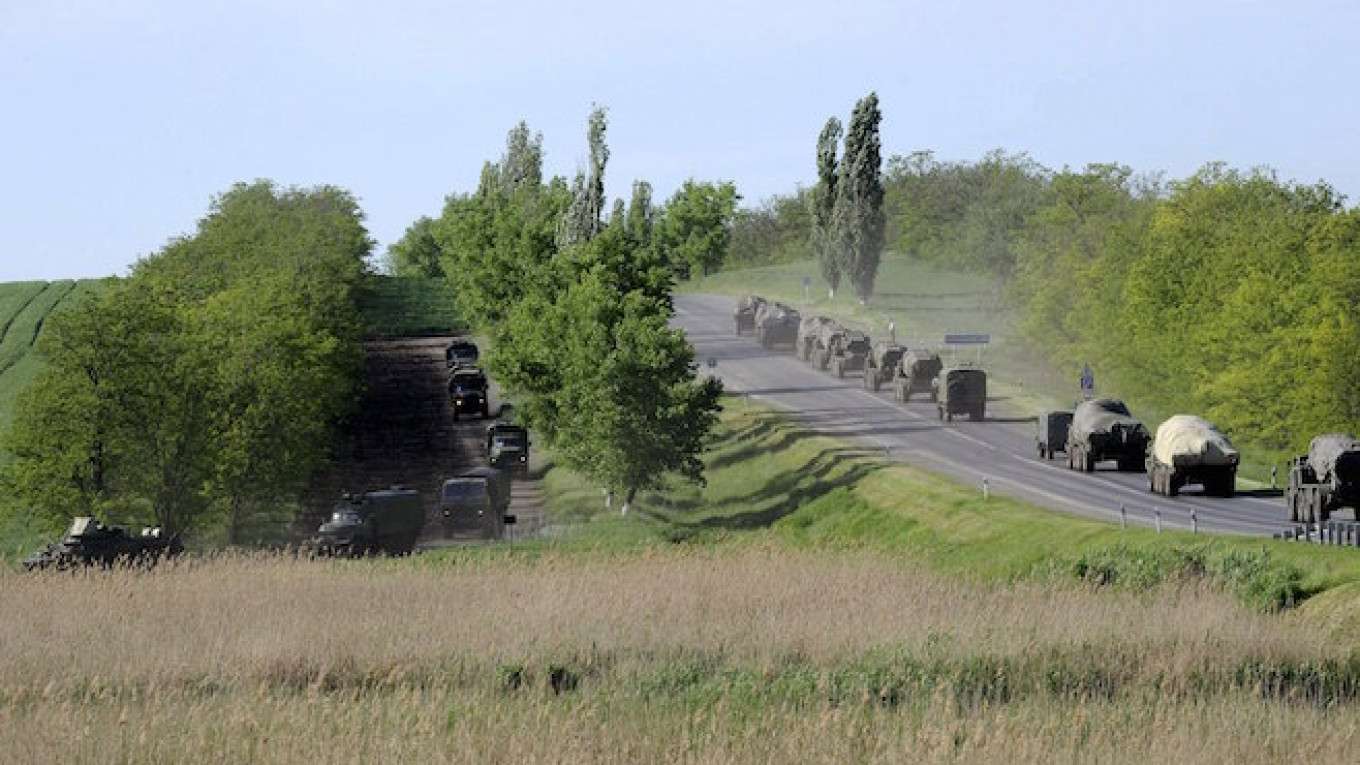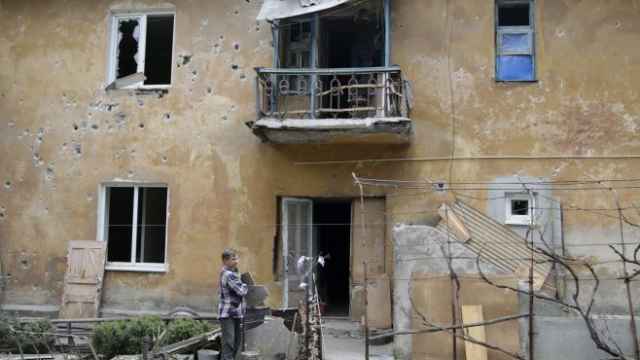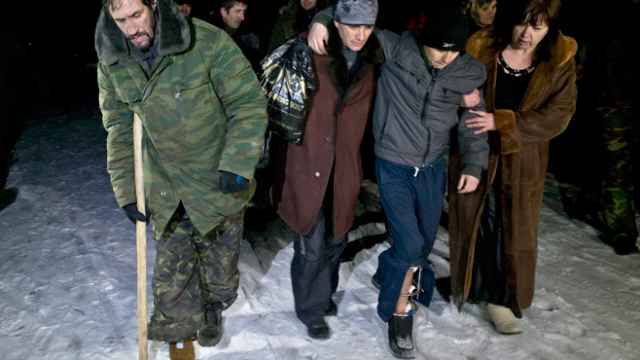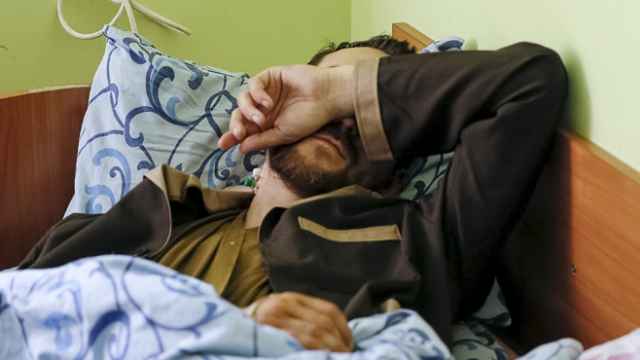KHUTOR CHKALOVA — Russia's army is massing troops and hundreds of pieces of weaponry including mobile rocket launchers, tanks and artillery at a makeshift base near the border with Ukraine, a Reuters reporter saw this week.
Many of the vehicles have number plates and identifying marks removed while many of the servicemen had taken insignia off their fatigues. As such, they match the appearance of some of the forces spotted in eastern Ukraine, which Kiev and its Western allies allege are covert Russian detachments.
The scene at the base on the Kuzminsky firing range, around 50 kilometers (30 miles) from the border, offers some of the clearest evidence to date of what appeared to be a concerted Russian military buildup in the area.
Earlier this month, NATO military commander General Philip Breedlove said he believed the separatists were taking advantage of a cease-fire that came into force in February to rearm and prepare for a new offensive. However, he gave no specifics.
Russia denies that its military is involved in the conflict in Ukraine's east, where Moscow-backed separatists have been fighting forces loyal to the pro-Western government in Kiev.
Russia's Defense Ministry said it had no immediate comment about the buildup. Several soldiers said they had been sent to the base for simple military exercises, suggesting their presence was unconnected to the situation in Ukraine.
Asked if large numbers of unmarked weaponry and troops without insignia at the border indicated that Russia planned to invade Ukraine, Kremlin spokesman Dmitry Peskov said during a conference call with reporters:
"I find the wording of this question, 'if an invasion is being prepared,' inappropriate as such."
The weapons being delivered there included Uragan multiple rocket launchers, tanks and self-propelled howitzers — all weapon types that have been used in the conflict in eastern Ukraine between Kiev's forces and separatists.
The amount of military hardware at the base was about three times greater than in March this year, when journalists were previously in the area. At that time, only a few dozen pieces of equipment were in view.
During the course of fours days starting on Saturday, Reuters saw four goods trains with military vehicles and troops arriving at a rail station in the Rostov region of southern Russia, with at least two trainloads traveling on by road to the base.
A large section of dirt road leading across the steppe from the Kuzminsky range to the Ukrainian border had been freshly repaired, making it more passable for heavy vehicles.
The road leads to a quiet border crossing typically only used by local residents. On the other side is Ukraine's Luhansk region, which is controlled by separatists and has been the scene of intense fighting.
Marching Orders
Valentina Melnikova, a human rights campaigner who works closely with families of Russian servicemen, said she had information that the Rostov region was being used as a staging post for troops on their way to Ukraine.
She said the information came from the mother of a serviceman stationed in the town of Totskoye, in the Orenburg region near Russia's border with Kazakhstan.
Melnikova said the serviceman heard from commanders that "they are going to be transferred to Rostov region after May 20 and then to Ukraine. They signed papers about non-disclosure of information and about acting voluntarily.
"Of course it was an order. How could it be voluntary? They are servicemen," said Melnikova, who runs the Moscow-based Alliance of Soldiers' Mothers Committees.
Her account could not be independently verified by Reuters.
In some cases where Russians have been captured in Ukraine by forces loyal to Kiev, Russian officials have said they were there of their own accord and were either on leave from the armed forces or had quit the military.
More military hardware trundles into the Matveyev Kurgan railway station on goods trains every day.
A train that pulled in on Tuesday was carrying 16 T-72 tanks, and a number of military trucks.
A local woman who was at the station with a pre-school age girl looked at the tanks on flat-bed rail cars, sighed, and said, "Nothing surprises me anymore."
During the four days, trains arrived delivering a total of at least 26 tanks, about 30 Uragan launchers and dozens of trucks, as well as several armored personnel carriers and self-propelled howitzers.
On two occasions, after the trains had been unloaded, reporters followed the column of vehicles to the firing range — a location that has already been linked indirectly to the fighting in Ukraine.
Bellingcat, a British-based group of volunteers who use social media to investigate conflicts, analyzed postings by Russian soldiers on social network accounts, including geo-location tags on photos, and concluded that some of those in Ukraine had earlier been at the Kuzminsky range.
A former Russian soldier said last year, when he was on active military service, that he underwent training at the range and was later sent up to the Ukrainian border. Once at the border he was ordered to fire Grad rockets, although he said he could not be certain they were fired into Ukraine. He also said some members of his unit had crossed into Ukraine.
"That's a very big firing range. We studied for two weeks, we had a quick course. After that we got the order and went to the border," said the former soldier, who did not want to be identified because the operation has not been made public.
A Message from The Moscow Times:
Dear readers,
We are facing unprecedented challenges. Russia's Prosecutor General's Office has designated The Moscow Times as an "undesirable" organization, criminalizing our work and putting our staff at risk of prosecution. This follows our earlier unjust labeling as a "foreign agent."
These actions are direct attempts to silence independent journalism in Russia. The authorities claim our work "discredits the decisions of the Russian leadership." We see things differently: we strive to provide accurate, unbiased reporting on Russia.
We, the journalists of The Moscow Times, refuse to be silenced. But to continue our work, we need your help.
Your support, no matter how small, makes a world of difference. If you can, please support us monthly starting from just $2. It's quick to set up, and every contribution makes a significant impact.
By supporting The Moscow Times, you're defending open, independent journalism in the face of repression. Thank you for standing with us.
Remind me later.






